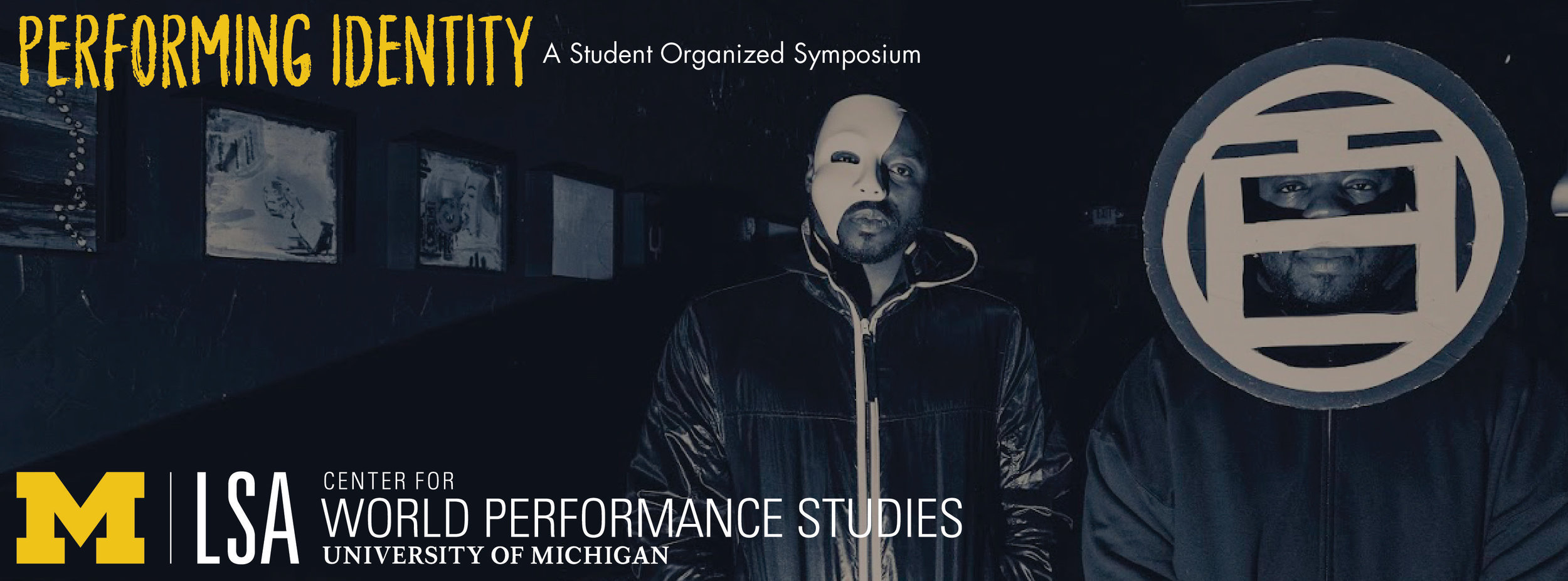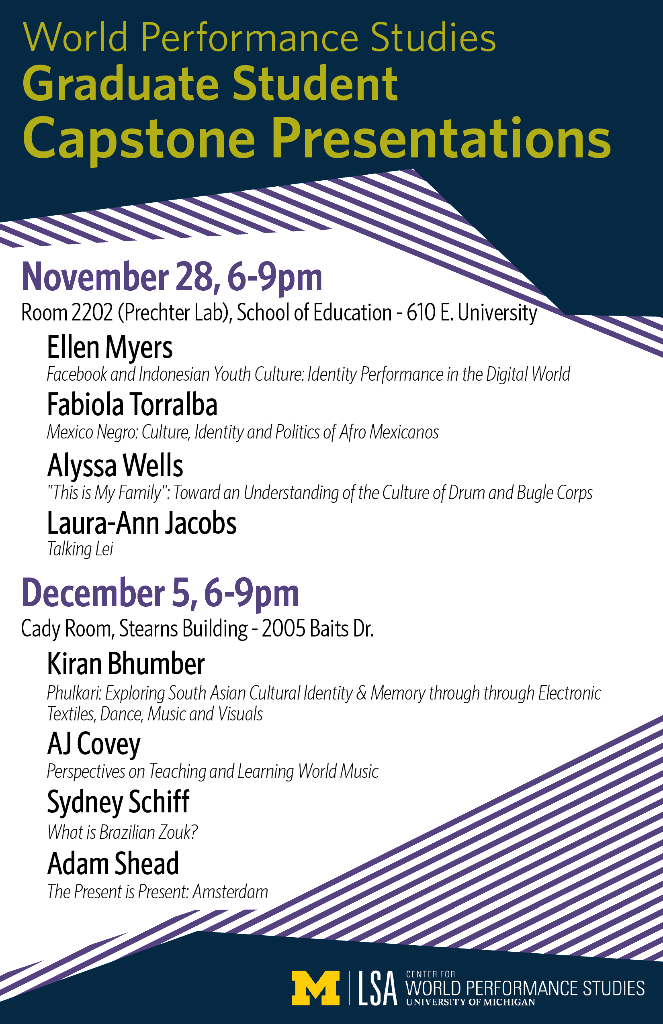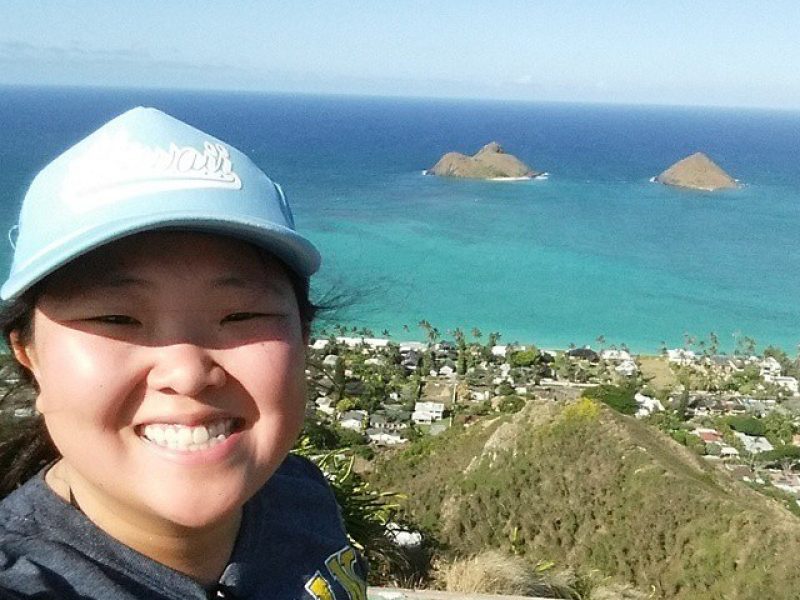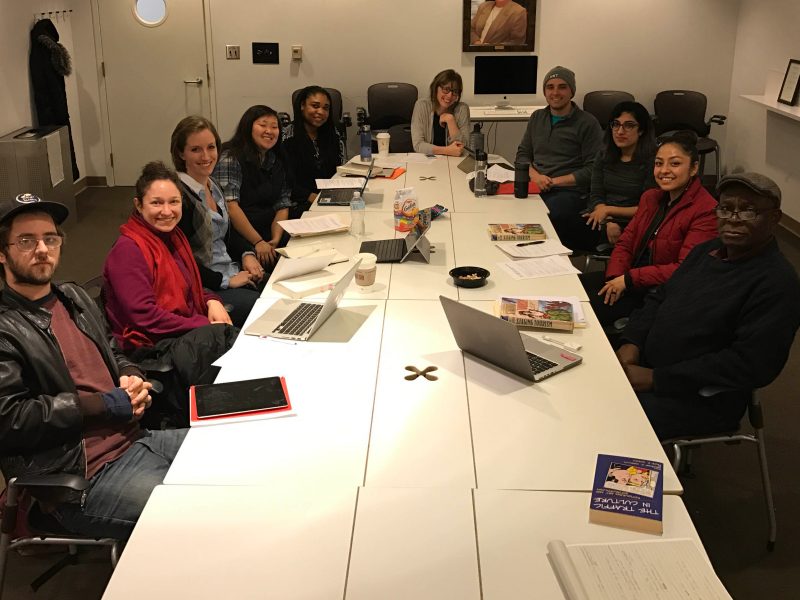Check out what the Center for World Performance Studies (CWPS) Student Advisory Board has organized for this year!
Human beings perform their identities everyday - in the classroom, on social media, on stage, in religious ceremony, even in choosing what to wear in the morning. On Sunday, November 11, from 12pm-4pm, the CWPS Student Advisory Board presents its first curated event around the theme of Performing Identity. Students are invited to engage in dialogue about social identities, participate in panel discussions about how students and/or performers across disciplines engage in performance of identity on and beyond our campus, and engage with performances by students and other local artists.
SCHEDULE OF EVENTS \\ SUNDAY, NOVEMBER 11
EAST QUAD, 701 E. UNIVERSITY AVE
12pm-1pm \\ Keene Theater: Welcome & Student Showcase, featuring work by Maize Mirchi, Sergio Barerra, Daniel Kumapayi and Alex Kime
1pm-2pm \\ Keene Theater: Panel Discussion on Gender & Intersectionality in Electronic Music, featuring Suzi Analogue, VIKI Viktoria, khlonez (Serpahine Collective), and Veniece Session
2pm-3:30pm \\ Room 1405: Intergroup Relations (IGR) Workshop: Social Identities 101
2pm-2:40pm \\ Keene Theater: PCAP Panel Discussion: Performing Re-Entry, a talk with Mary Heinen McPherson (moderator), Jen Smith Scibilia (The Sisters Within Theater Troupe at Women's Huron Valley), Asia Johnson (The Sisters Within Theater Troupe) and Cozine Wlech Jr. (Co-Instructor for The Atonement Project)
2:45-3:15pm \\ Keene Theater: Faculty Talk by Naomi Andre on her book Black Opera
3:30pm \\ Keene Theater: Performance & Artist Talkback with Jamall Bufford, of hip hop duo The Black Opera








